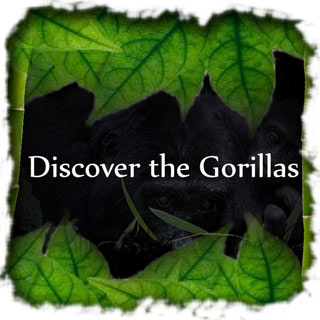Gorillas are the only representative of the world’s largest primate living in the wild. The population of mountain gorillas is believed to have been reasonably stable until 1960’s when it was estimated to be 450 by George Schaller in the Virunga Conservation area. The number went on reducing in 1970s to 250 and this was due to the factors like the splitting of the Albert National Park into its current Parc National des Volcans in Rwanda and Virunga National Park in Congo and especially the loss of about 40% of the habitat in the Rwandan park.
It is therefore during the 1970s that “gorilla conservation” became key to the survival of the almost extinct mountain gorillas. By that time, poaching of gorillas was a common phenomenon, which made the priority effort from the Karisoke Centre and Dian Fossey the institution of a private anti-poaching unit. On 31st December 1977 Digit the silvervack of Group 4, the closest gorilla group to Dian Fossey, was killed by poachers, his head decapitated and his hands removed to be sold as ashtray. This accident was a culminating escalation of killings and the reaction from the Fossey group was now firm. Fossey created the “Digit Fund” aimed at gathering support for anti-poaching initiatives in Rwanda (later on the Fund was changed to Dian Fossey Gorilla Fund International). Meantime, the preparation was made for the launch of the “Gorilla Tourism Project” in 1979, by Amy Vedder and Bill Webber, the first eco-tourism project in Rwanda, with the objective to link gorilla conservation and gorilla tourism.
With time, by the end of the 1980s Rwanda as a country was earning much more from gorilla tourism than poaching had ever done.
During the 1990s, both Rwanda and Congo went through periods of political unrest which also affected gorilla conservation.
In 1991, gorilla tourism in Rwanda came to an abrupt halt when the country erupted into a civil war which resulted into the genocide of 1994, which forced both the rangers and the researchers within the Virungas to evacuate the park. Again in May 2002, two females were shot dead and two infants were stolen from Volcanoes National Park in Rwanda. In Congo between 1995 and 2007, during which the Virunga National Park was closed to tourists (as well as it is today in 2012) at least 20 gorillas were killed.
Uganda was politically stable in the 1990s, but in 1995 seven habituated gorillas died as a result of poaching in Bwindi National Park. These were the four members of Kyaguriro, who were speared to death.
To respond to the need of a coordination in the conservation efforts in favor of mountain gorillas, the International Gorilla Conservation Programme was formed in 1991 and aims at ensuring the conservation of the endangered mountain gorillas and their natural habitants in the three major countries of Rwanda, Uganda and the Democratic Republic of Congo (DRC). It is a conservation partnership which incorporates the respective protected area authorities of the above three countries: the Rwanda Development Board (RDB), Uganda Wildlife Authority (UWA) and the Insititut Congolais Pour la Conservation de la Nature (ICCN). The mission of these three organizations is to conserve the endangered mountain gorillas and their habitat through partnering with key stakeholders while significantly contributing to sustainable livelihood development.
The programme’s ultimate aim is to protect the afromontane forest and the many species it harbours, by ensuring that it is managed sustainably and by tackling the threats to its survival. In order to achieve this goal, it has set itself twin objectives: to reduce the threats to mountain gorillas and their forest habitat by creating widespread support for conservation among local communities, interest groups and the general public; and to improve the protection of gorillas and their habitat by encouraging the relevant authorities to adopt a consistent, collaborative approach to conservation policy and legislation throughout the region.
There is a growing recognition among conservationists that a regional, ecosystem-based approach to management is crucial to effective long-term species and habitat protection, particularly in areas of political instability. One of the programme’s main objectives is to increase collaboration between the protected area authorities and their partners in the region. The programme provides a mechanism for the respective countries to develop a regional approach to the conservation of a shared habitat.
The conservation programme tries to gain support for conservation among the local communities, and to ensure that the protected area authorities collaborate with these local communities. A census of mountain gorillas in the Virunga Massif in March and April 2010 showed that there had been a 26.3% increase in the population over the past seven years, an encouraging sign that conservation efforts are succeeding.
Organizations for gorilla conservation.
Dian Fossey Gorilla Fund International – Karisoke Research Center. This is the organization that follows the steps of Dian Fossey and the old Karisoke Centre which was created in 1967 and destroyed during the 1994 civil war in Rwanda. The Karisoke Centre is still the base of the organization in Rwanda.
International Gorilla Conservation Program (IGCP). This is a joint initiative of three organizations, the African Wildlife Foundation, Fauna and Flora International and the World Wide Fund for Nature (WWF). The major objective of the organization is to promote coordination between the different partners in gorilla conservation and between different countries.
Mountain Gorilla Veterinary Project (MGVP). This organization provides veterinary care to the gorillas and also monitors the health of each individual gorilla in both research and tourist groups.
Mountain Gorilla Conservation Fund. It was established as a break away from the Mountain Gorilla Veterinary Project. This project addresses the conservation issues in Rwanda and Uganda using “Natural Treasures Curriculum” which is a school based program using a hands on approach to teach students about Gorillas and the benefits gained from conserving them plus their habitats. They also address conservation through student connections where local schools are connected to international schools throughout the world.

